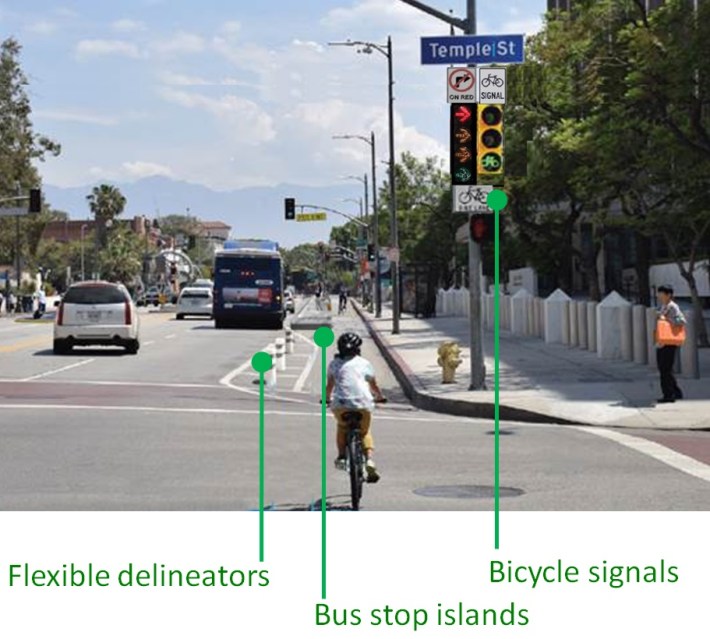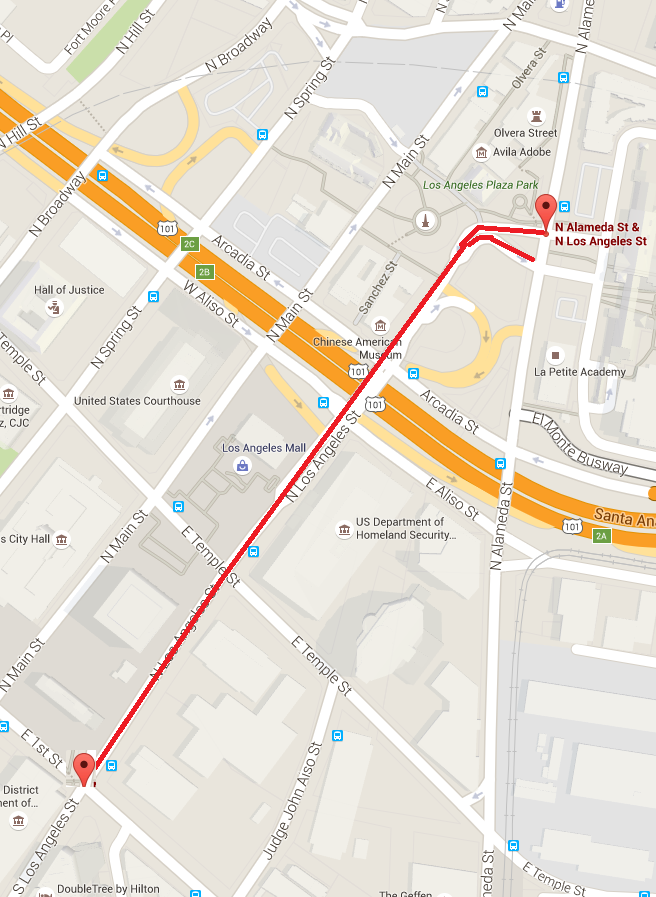
Yesterday, a construction notice appeared on the official L.A. City Transportation Department (LADOT) Twitter account. It announced a "resurfacing and bike lane enhancement project" to include "protected bike lanes" on downtown L.A.'s Los Angeles Street, extending from First Street to Alameda Street. Construction is set to begin this weekend, and conclude by May 15. During the month-long construction, cyclists and drivers will share a single lane.

This 0.5-mile stretch of Los Angeles Street has existing buffered bike lanes that were striped in 2012.
A protected bike lane on Los Angeles Street was mentioned by LADOT bicycle coordinator Michelle Mowery in 2014. The project was planned to coincide with city Bureau of Street Services resurfacing of the street, which was delayed.
LADOT General Manager Seleta Reynolds describes the Los Angeles Street facility as a "laboratory" for testing out protected bike lane features. Though LADOT has implemented protected lanes in the Second Street tunnel and on Reseda Boulevard, Los Angeles Street will be the first L.A. protected bikeway facility to feature bike signals, and integrated transit stop islands.
Reynolds mentioned that Los Angeles Street is an easy site for trying out new features because it is surrounded entirely by governmental uses. The protected bike lane will run adjacent to Union Station, El Pueblo, the Edward Roybal Federal Building, City Hall East, City Hall South, LAPD, as well as crossing over the 101 Freeway. The high-visibility central downtown location puts the state of the art protected facility right under the eyes of city, county, state, and federal governmental staff and electeds. This should help familiarize governmental insiders with how protected bike lanes function.
Reynolds added that the new protected lanes will be completed in time to dovetail with implementation of Metro bike-share program coming to downtown L.A. this summer.
The existing Los Angeles Street bike lanes experience a significant amount of bike-car conflict, with right-turning drivers and parked law enforcement vehicles often occupying the bike lane. The new protected facility should minimize these conflicts. Delineator bollards will keep cars from parking or driving in the lane. New signals will give cyclists and right-turning drivers separate signal phases.

Cyclists can ride in the new lanes in just one short month; look for a grand opening in mid-May.






